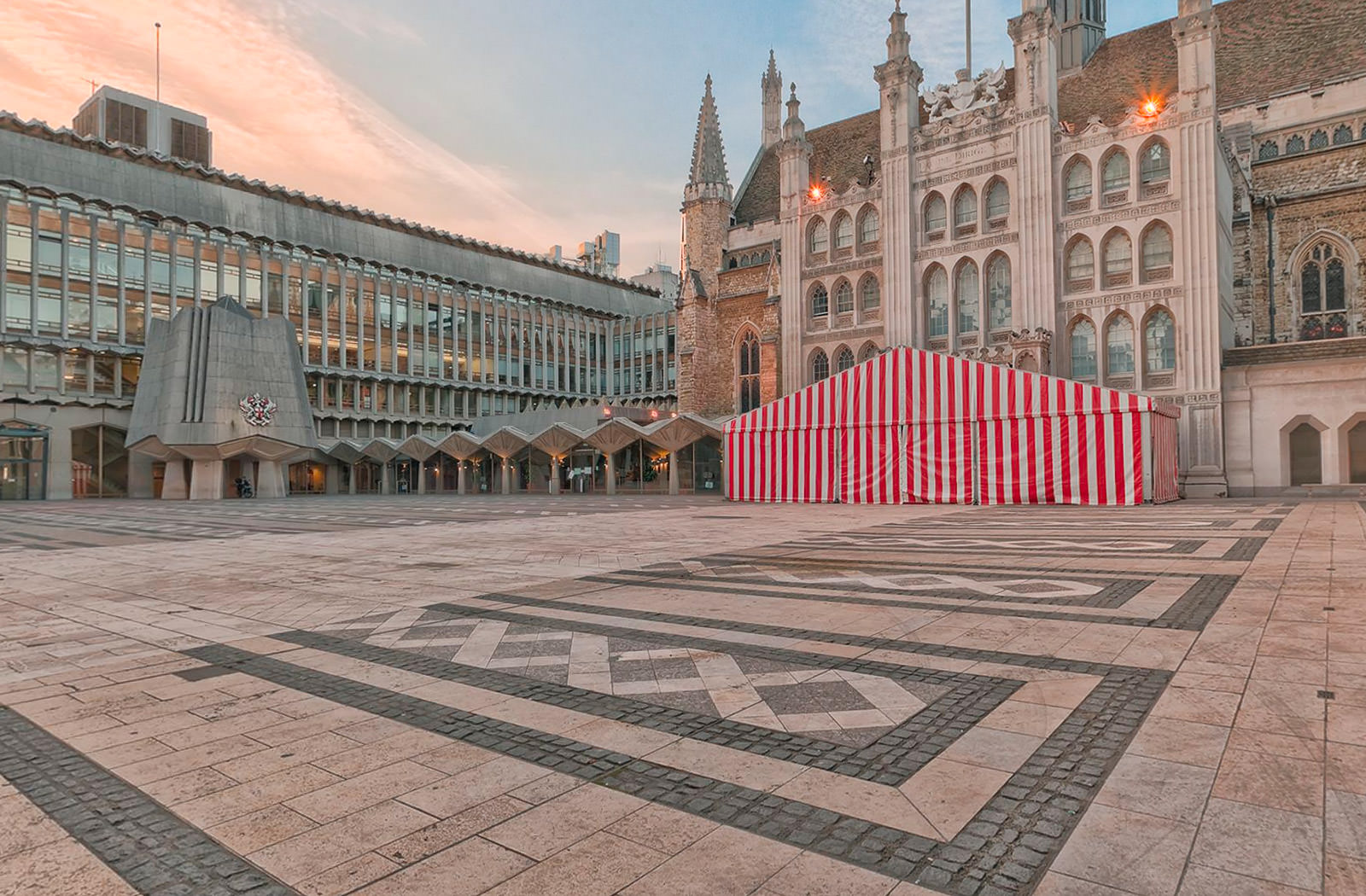The Guildhall is the administrative and ceremonial centre of the City of London. The building itself has parts dating from 1411. It is sited on the foundations of a Roman amphitheatre. The London Roman Amphitheatre was built in 70AD and only discovered in 1988. It is now a scheduled monument displayed in situ in the basement of the Guildhall Art Gallery (which is seen in the virtual tour to the right of the Guildhall itself, with its gothic facade).
Guildhall has a rich history, with trials held within its halls for Thomas Cranmer (the protestant reformer and martyr). Lady Jane Grey, who Cranmer had helped install on the throne for just nine days, was also tried here.
The Guildhall building survived the Great Fire of London in 1666 and a Luftwaffe raid in 1940. It has been restored over the years, and still forms the administrative headquarters of the City of London. It is also now used as a venue for lavish banquets and unforgettable events.
St Lawrence Jewry
The church of St Lawrence Jewry opposite the Guildhall was yet another of London’s great buildings destroyed in the Great Fire of London. The church was redesigned by Sir Christopher Wren and rebuilt in the 1670s. It was restored again after WWII, after suffering extensive damage in the Blitz. It is the official church of the Lord Mayor of London. If you’d like to explore another Wren church in details, take a peek at our extensive virtual tour of St Magnus the Martyr, also in the City of London.
The Guildhall Art Gallery
The Guildhall art gallery was built in 1885, but, like the Guildhall and St Lawrence Jewry, was a victim of the second world war, and did not survive the Luftwaffe’s Blitz. It was rebuilt in 1999 and houses a collection of over 4000 works of art. It is open to the general public.
This Guildhall City of London virtual tour shows the view across Guildhall Yard towards the Guildhall with St Lawrence Jewry on Gresham Street visible to the left.
You can view more City of London virtual tours here.

